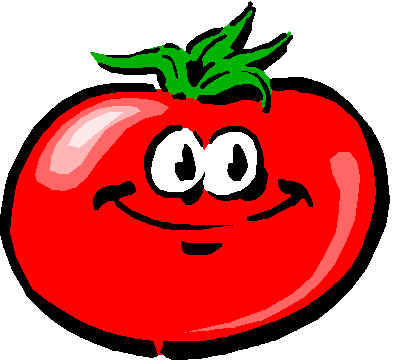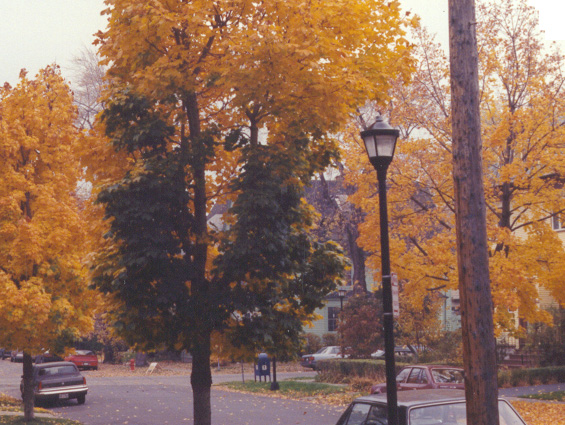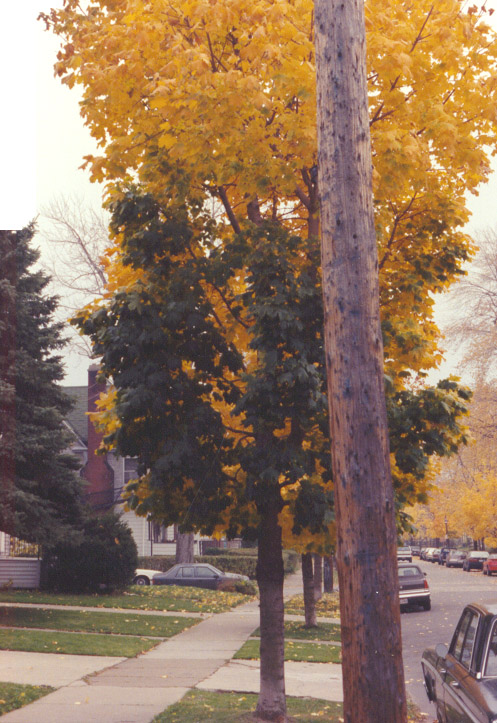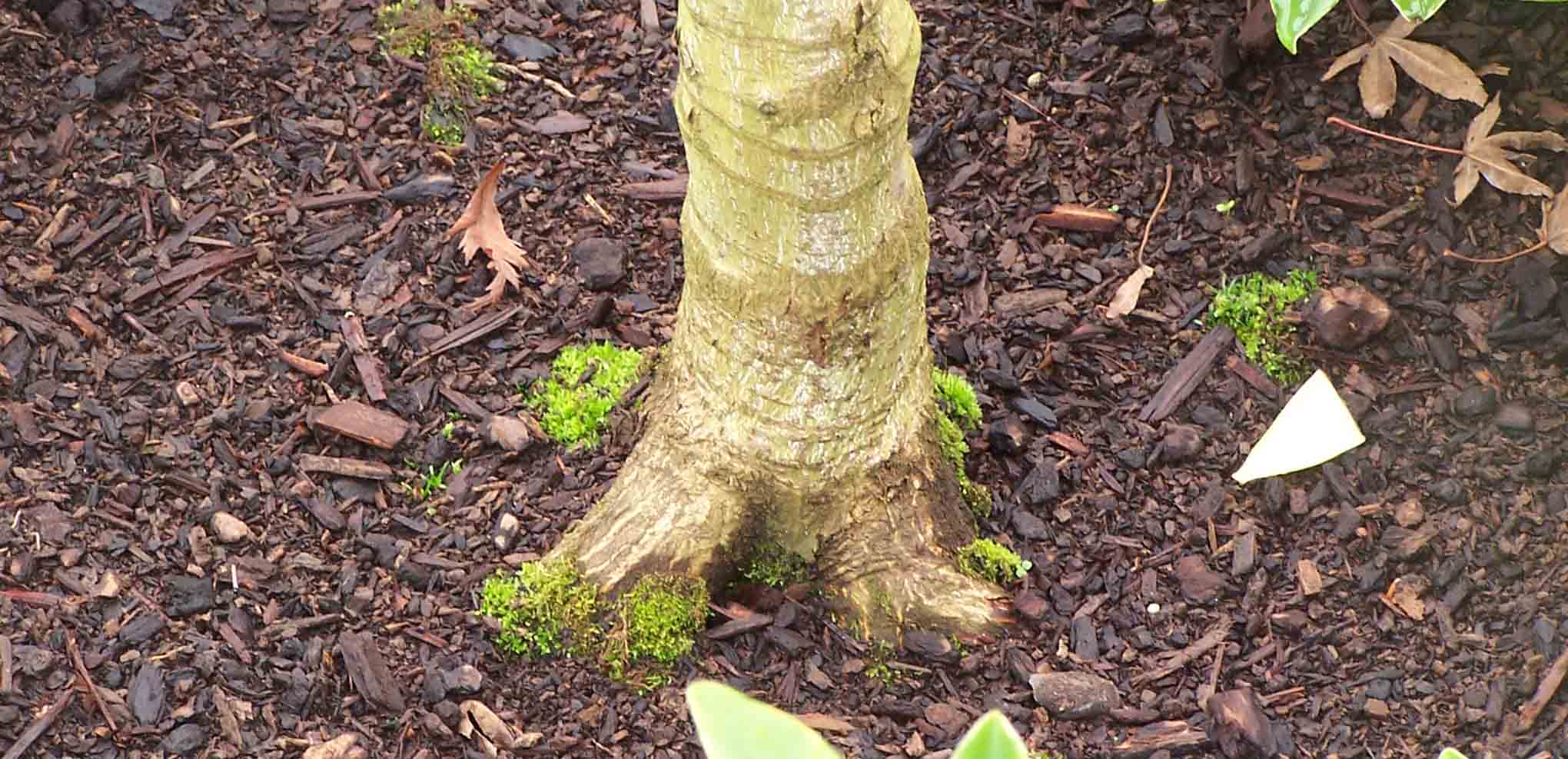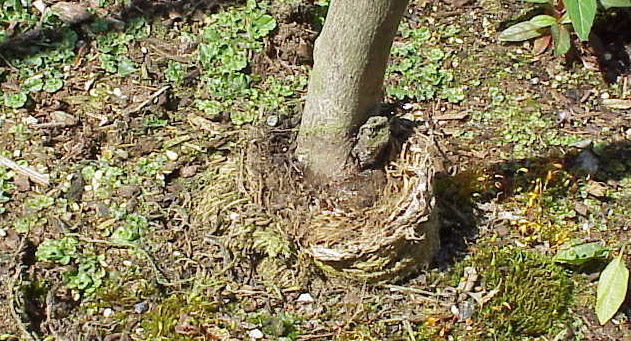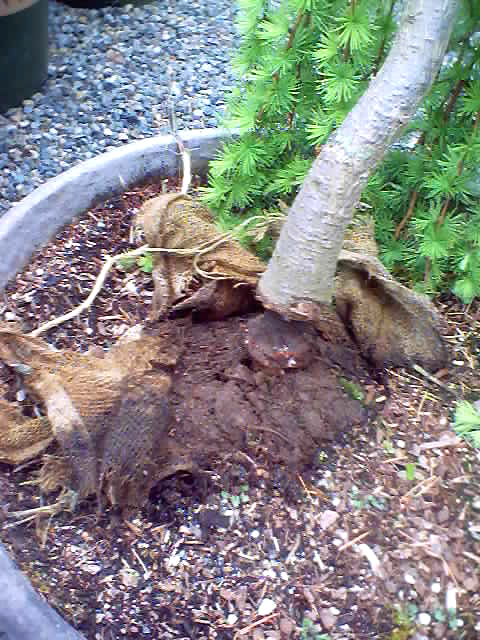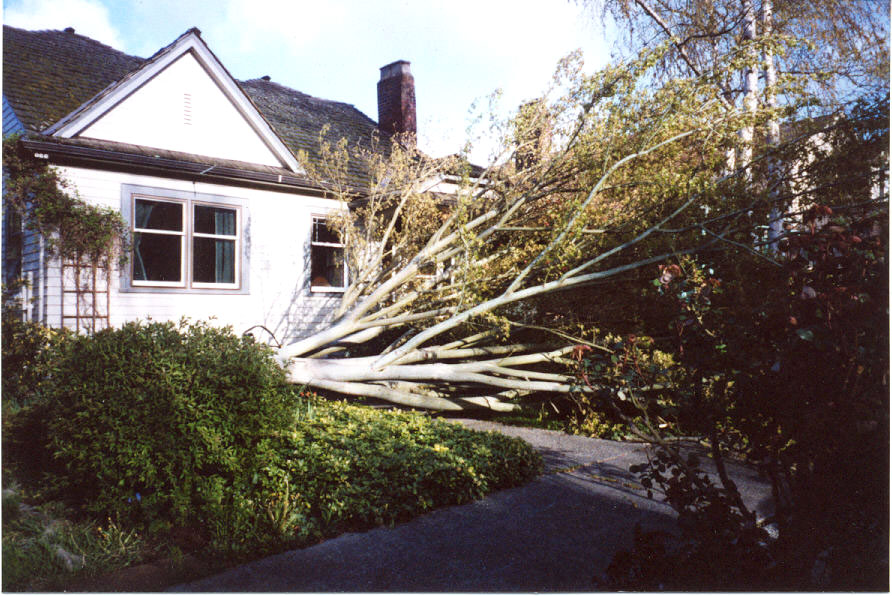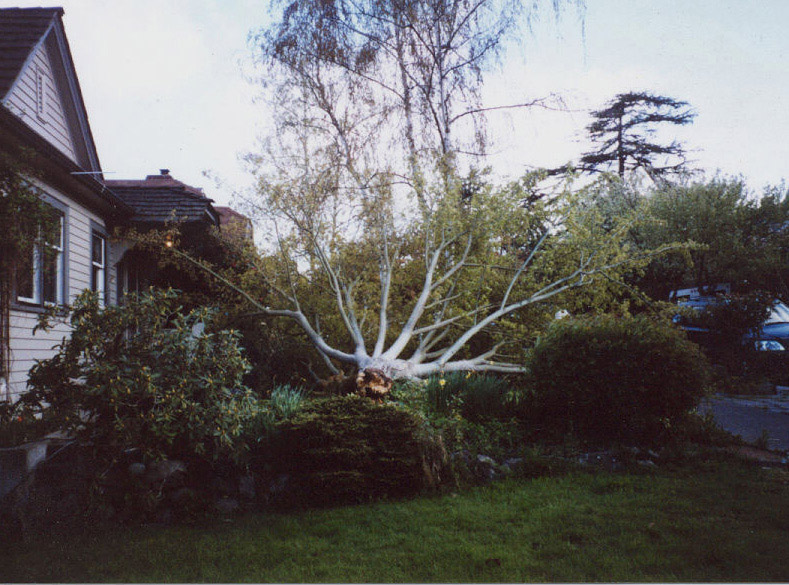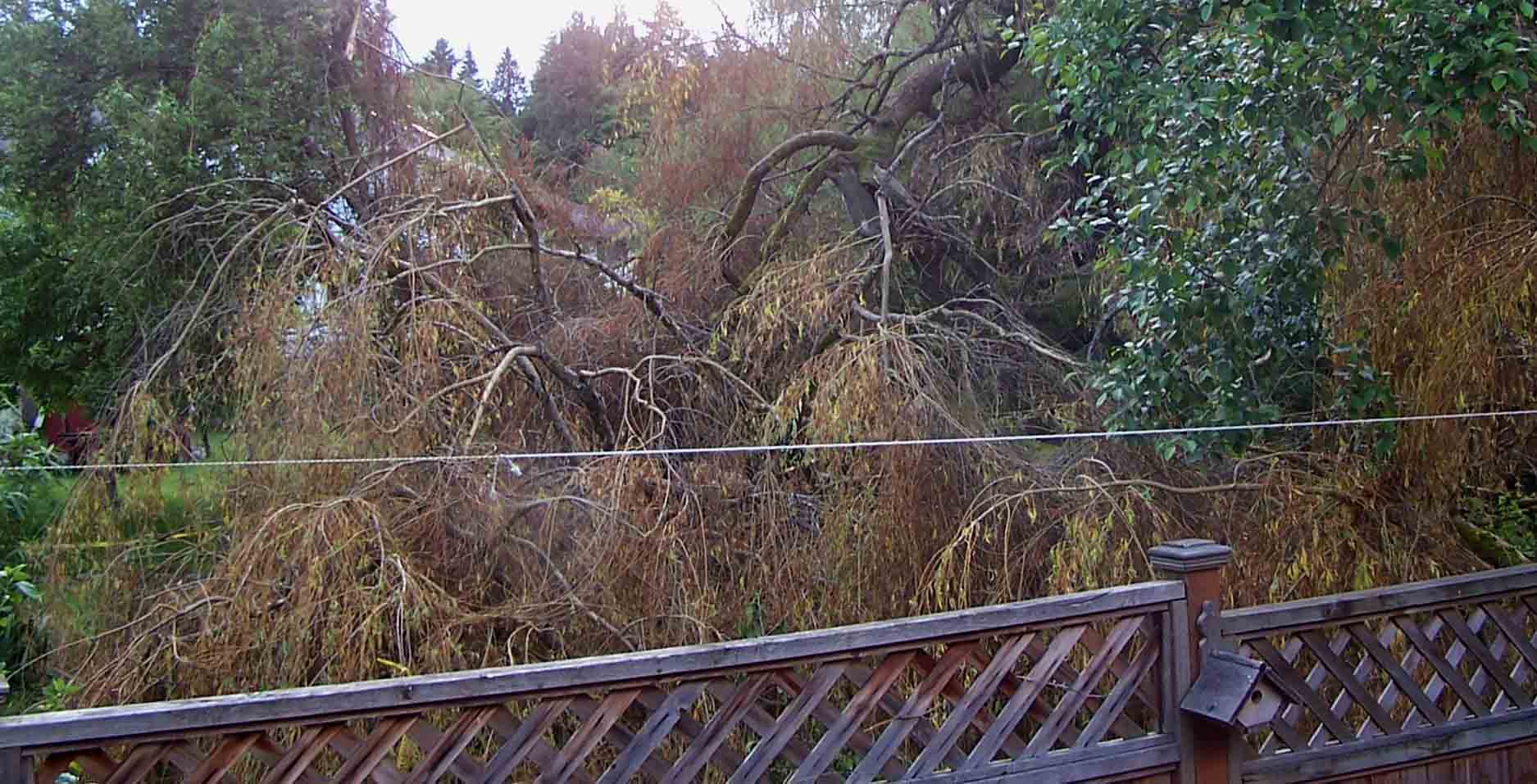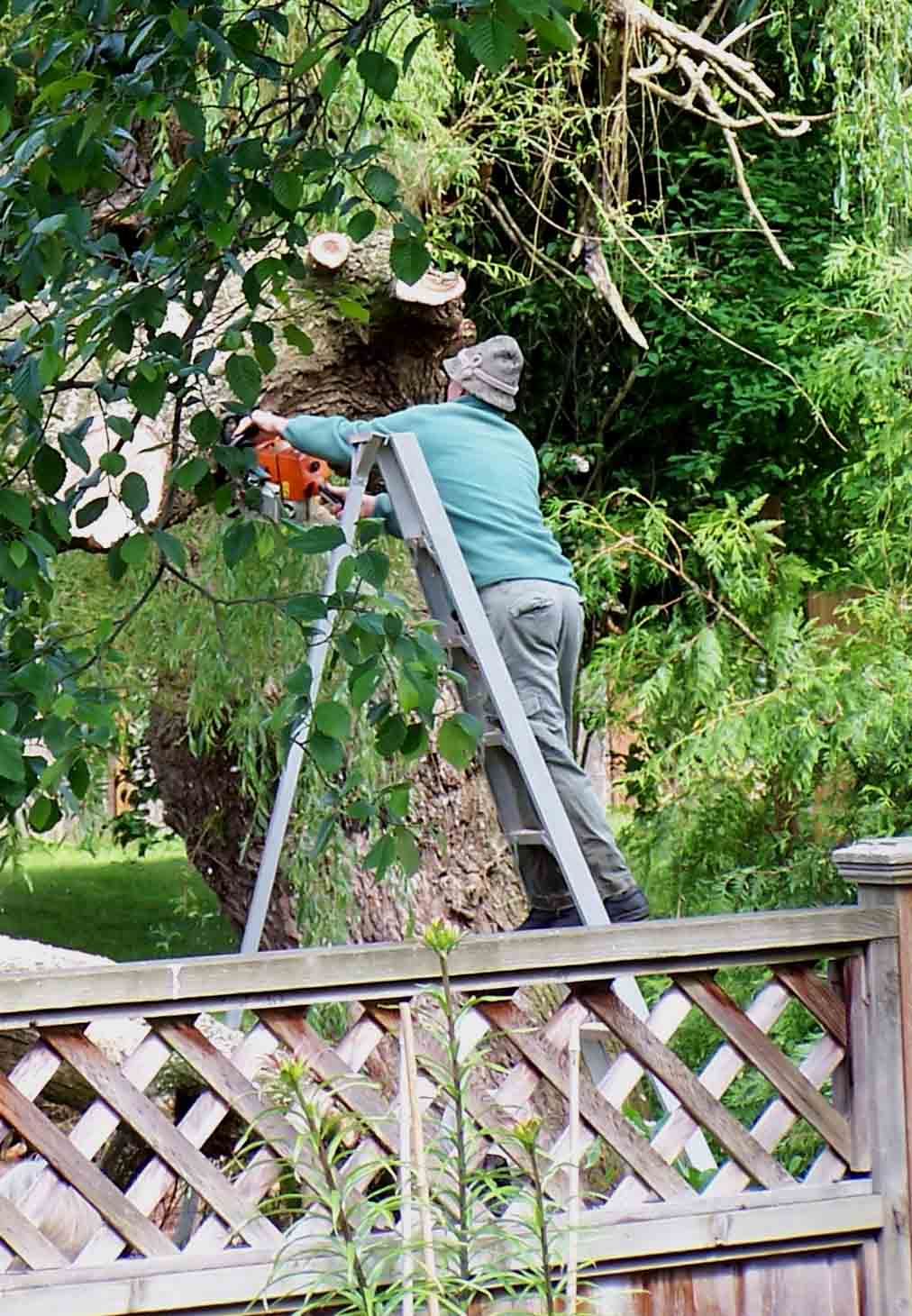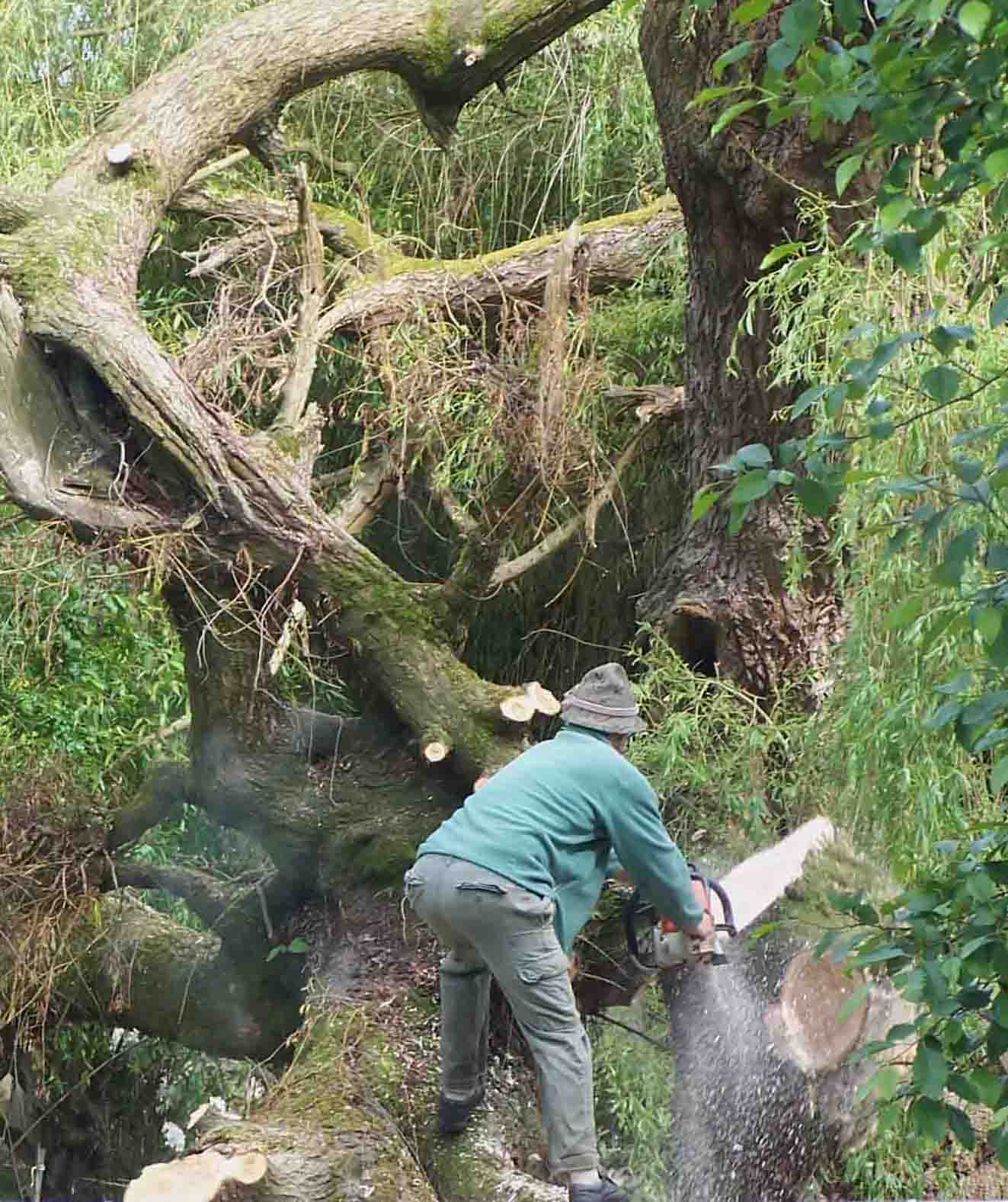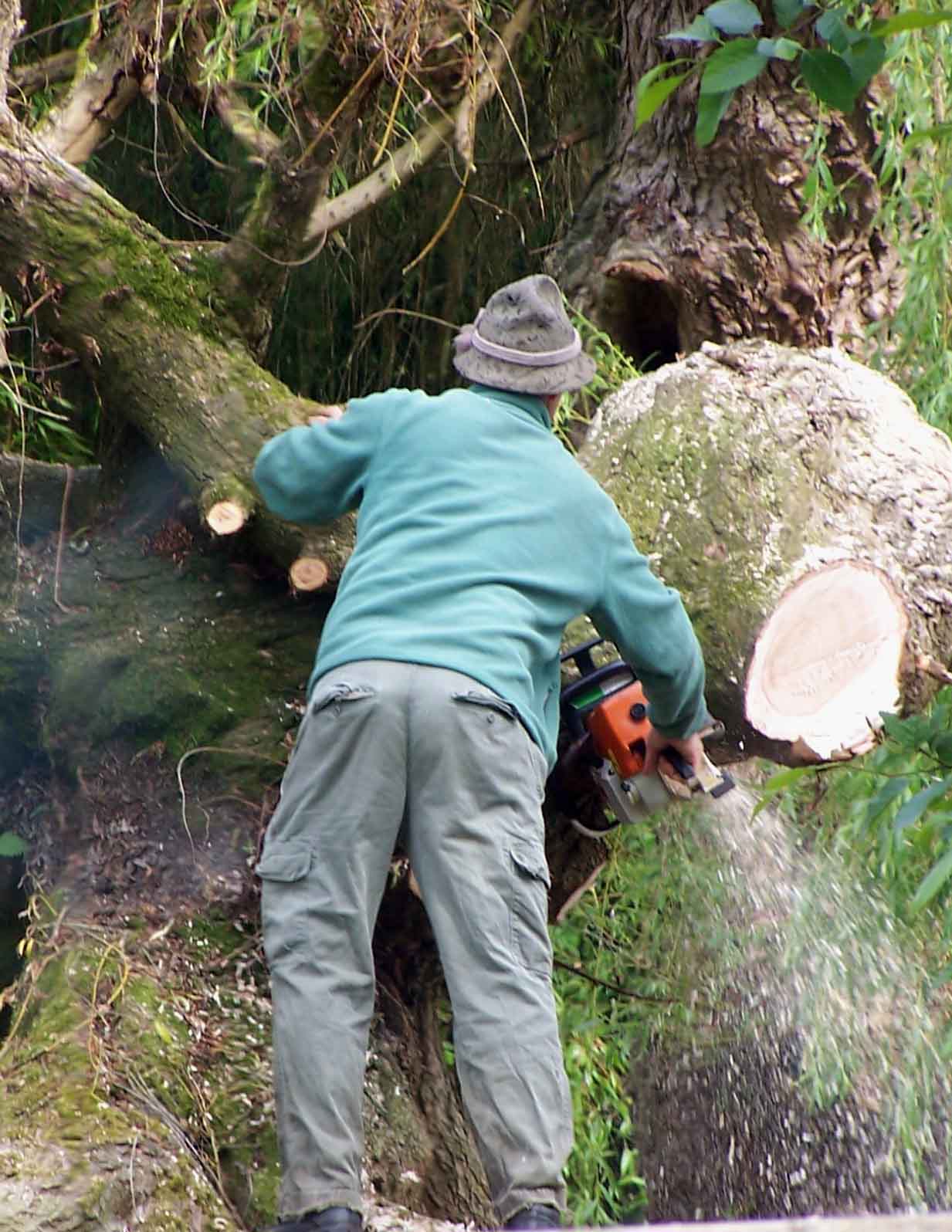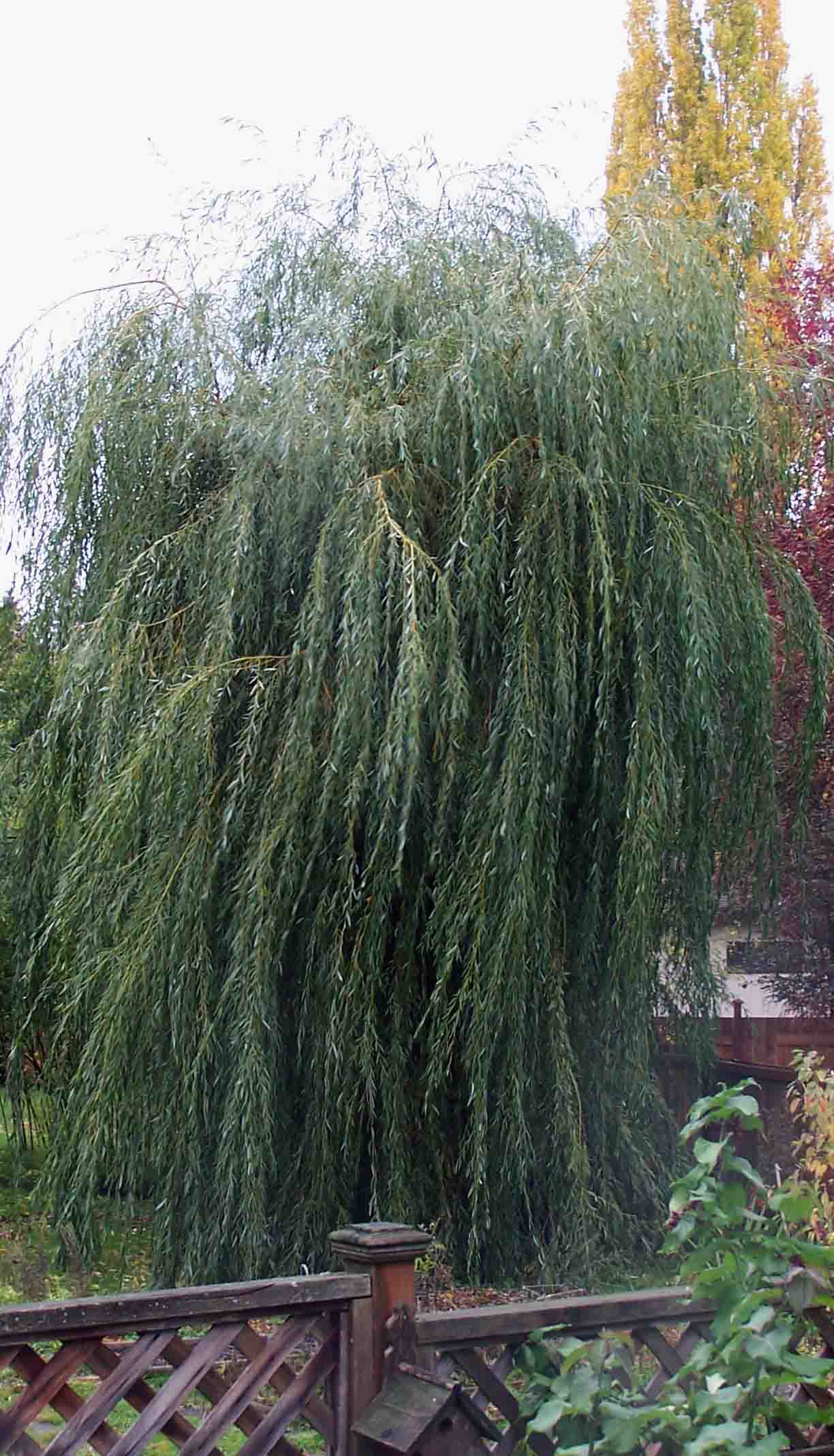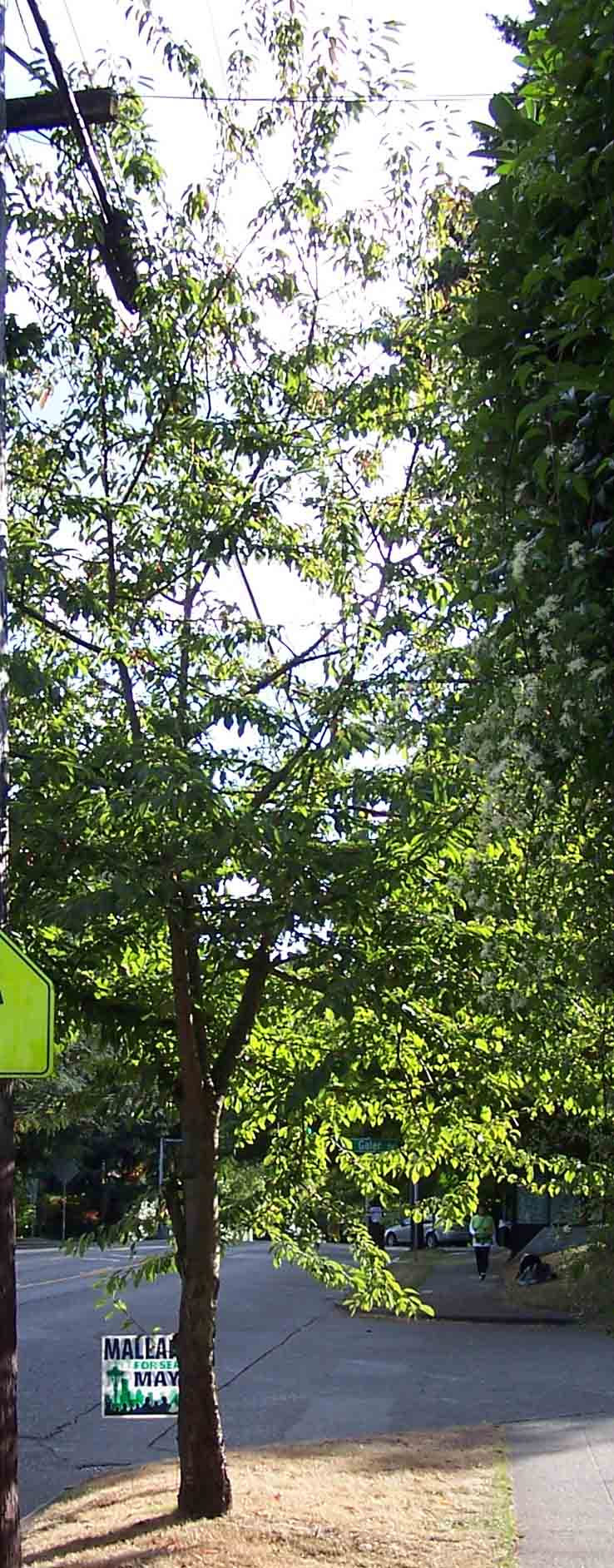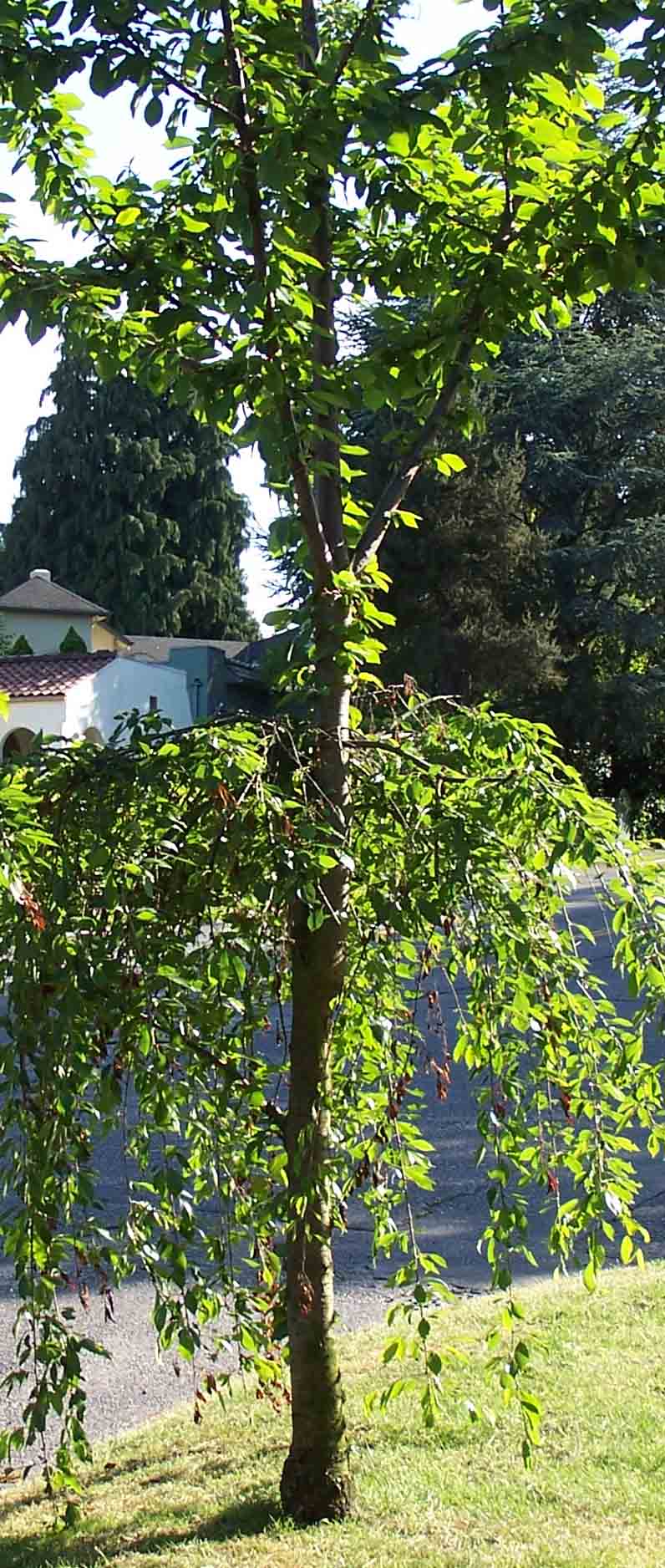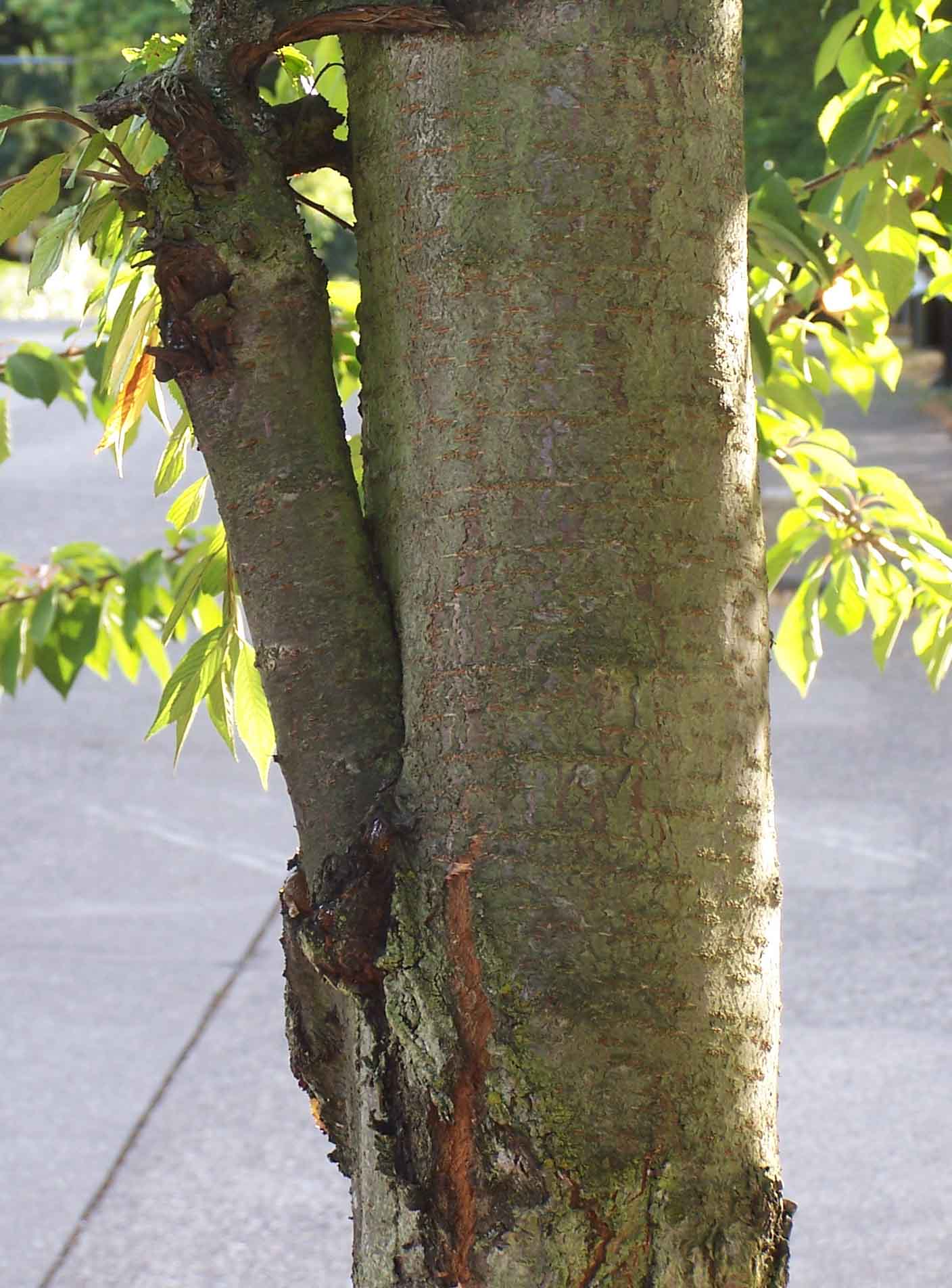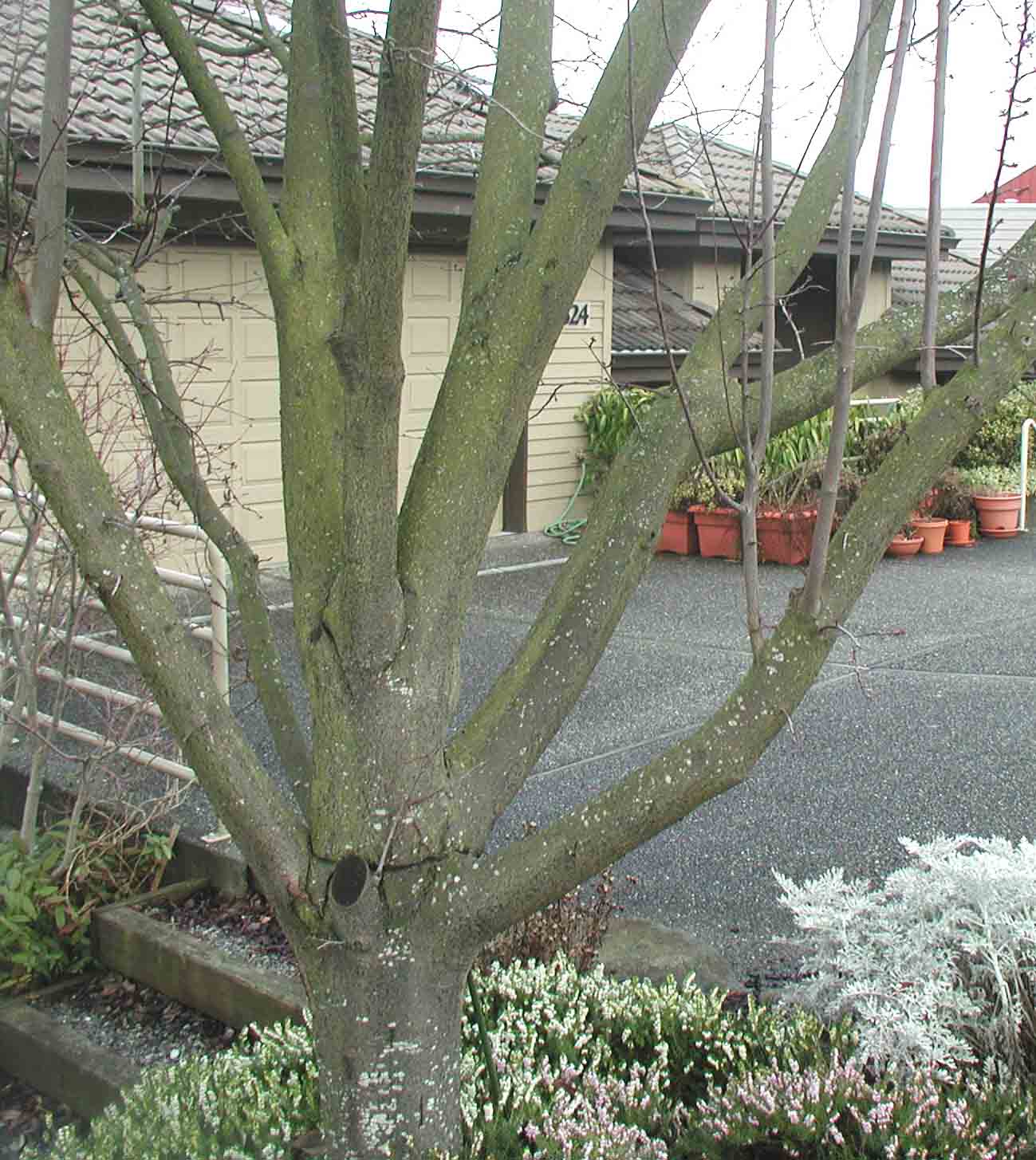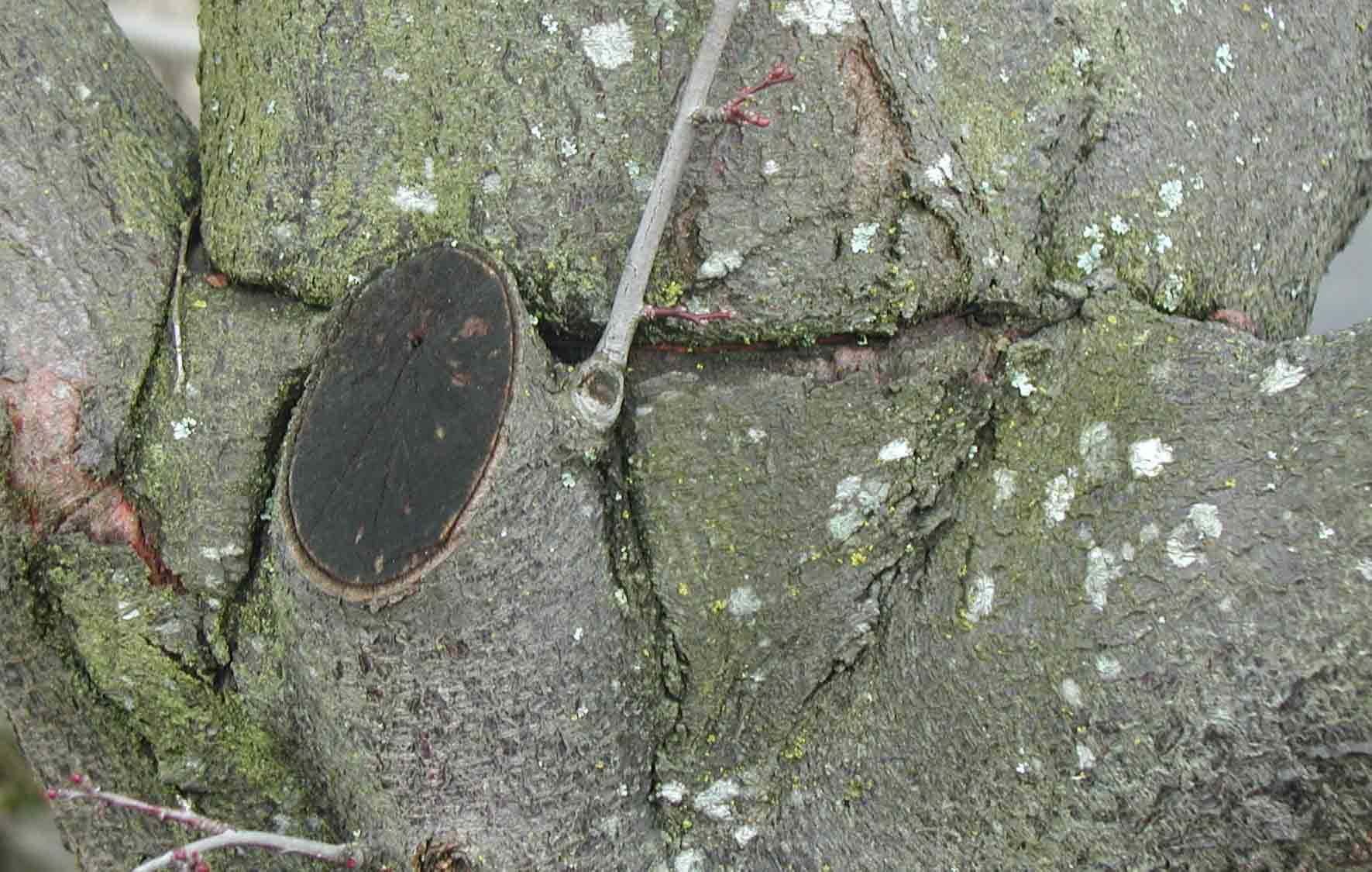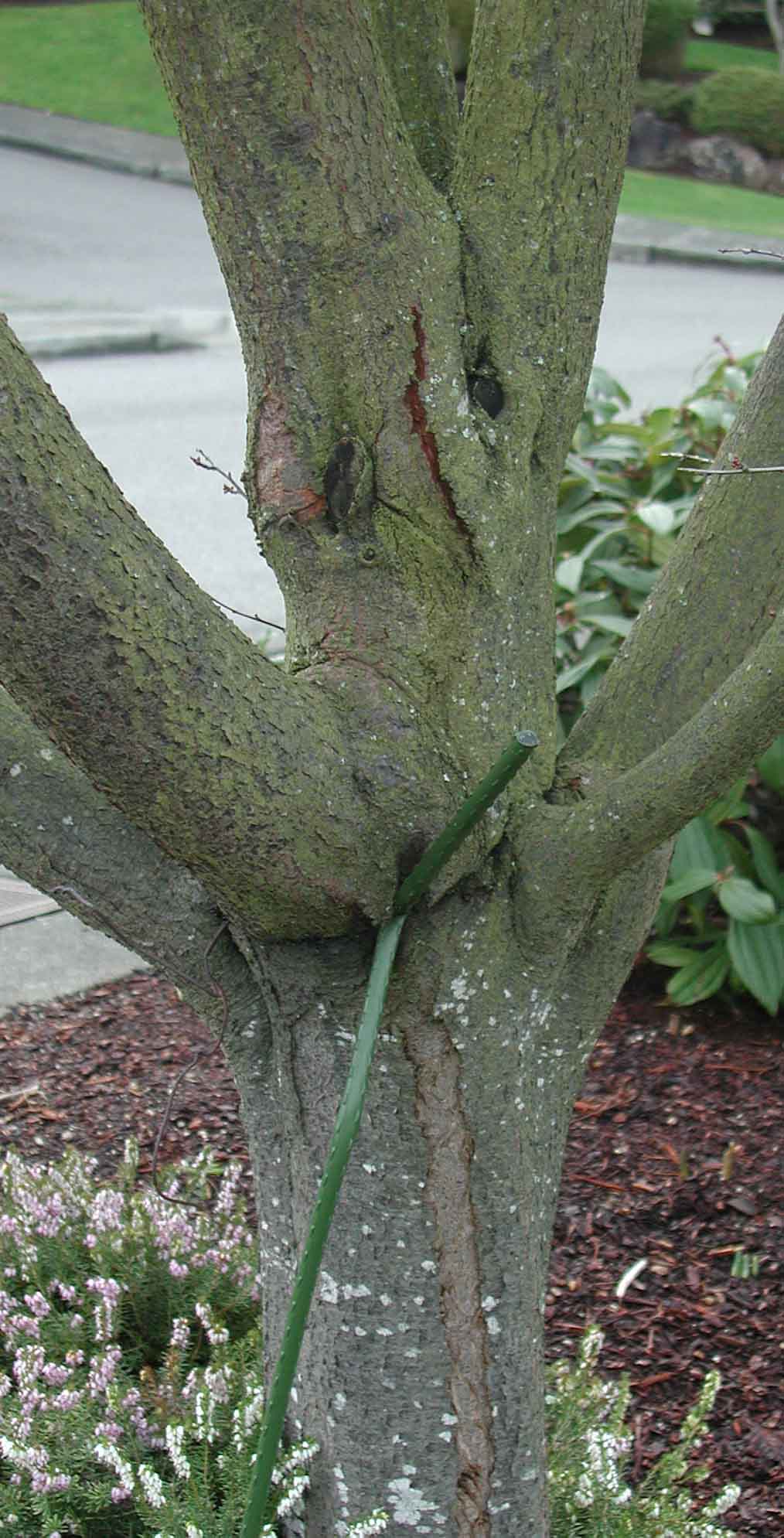Well, I’m recovering from this simply horrific chest cold or whatever it is and feeling brain function returning. The last time we were at our virtual nursery, we were looking for root flare and inspecting the trunk for damage from improper bagging. Since we’re already down on our hands and knees, let’s consider roots. In general, you really don’t want to SEE roots, except where they meet the trunk (the root flare). The presence of coyly crossed “knees” in this photo is a clear indicator of a plant that wasn’t potted up quickly enough:

Likewise, while the fused, circling woody root mass in this next photo might be aesthetically interesting, it sure doesn’t make a functional root system:
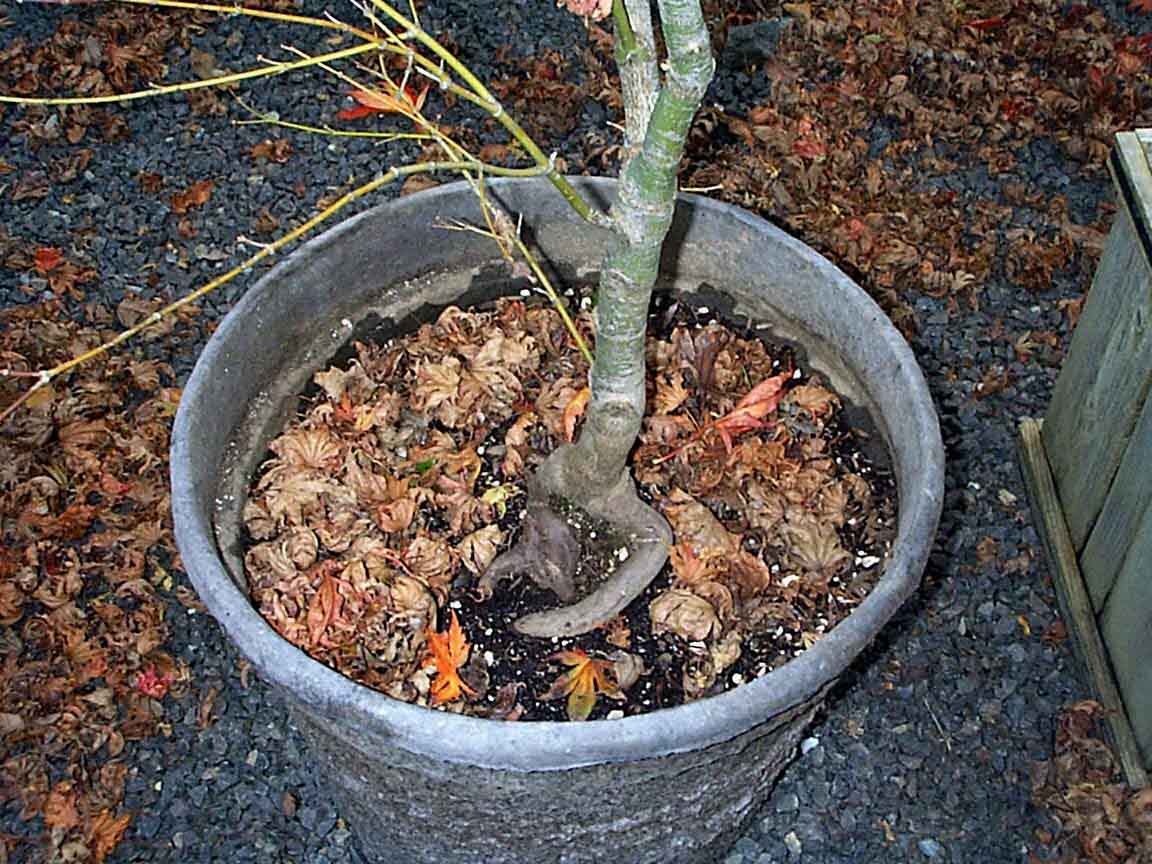
It’s pretty easy to avoid these types of plants, because you can see the root problems before purchasing. The hidden root problems, such as those I’ve shown in earlier posts, are tough to find until (or if) you take all the extraneous stuff off of the root ball.
Finally, there is a new production practice that really fries my potatoes. What really makes me angry is that these trees had absolutely LOVELY roots – a nice flare, woody roots spreading radially – and then they were butchered – and left unprotected:
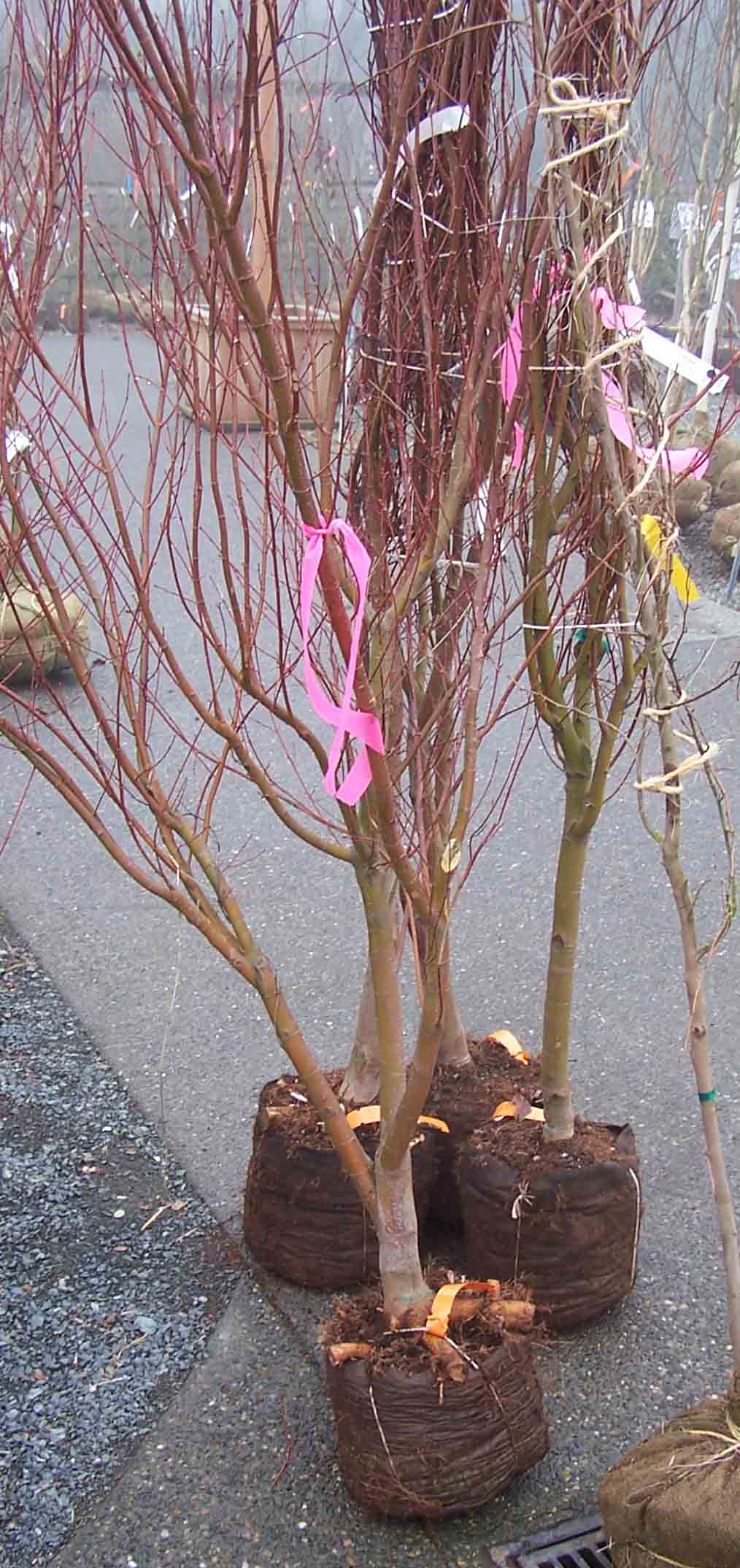
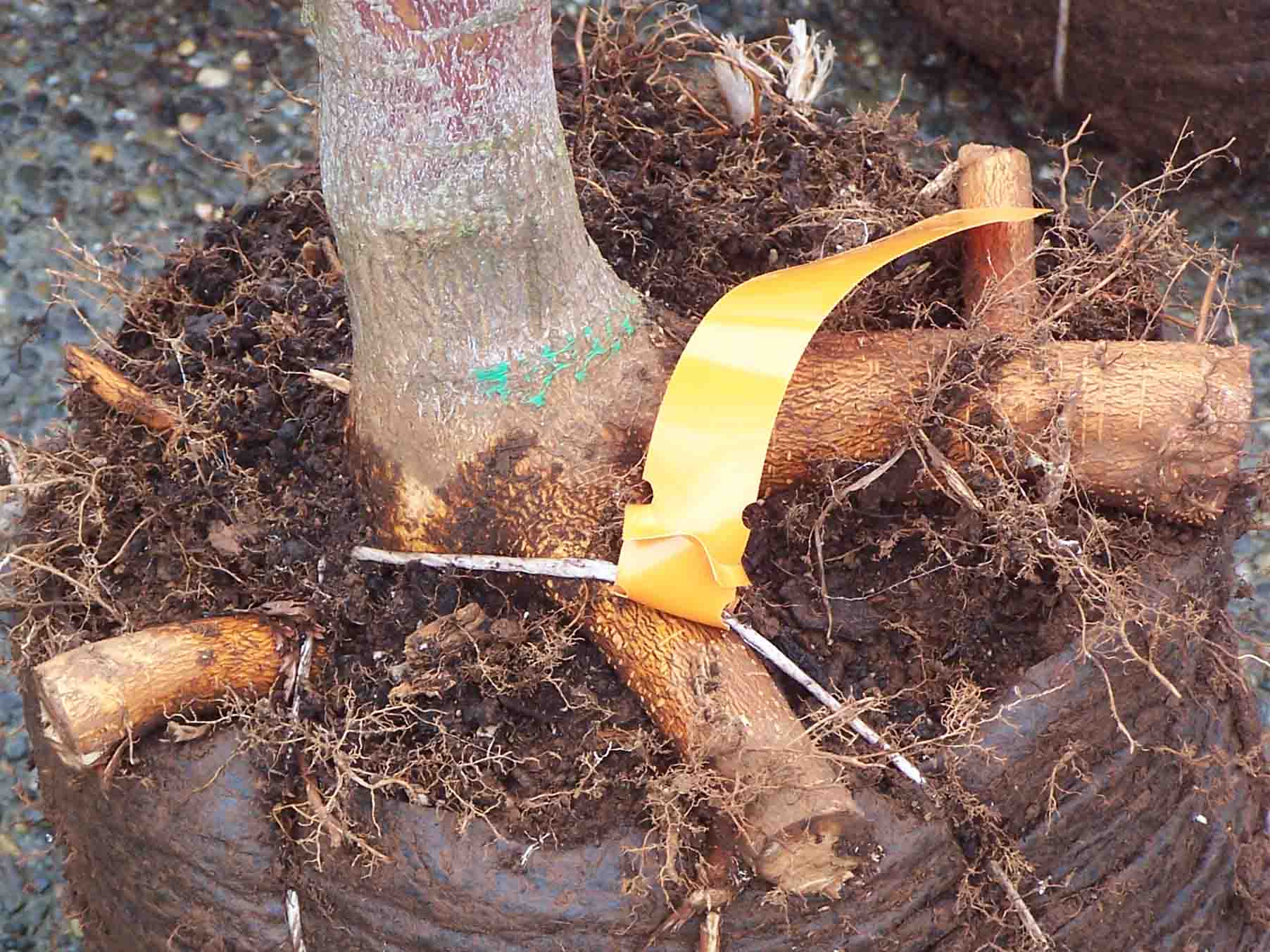
I can think of no legitimate reason for this practice. I’ll be curious to hear my colleagues’ thoughts, as well as those from the blogosphere.

